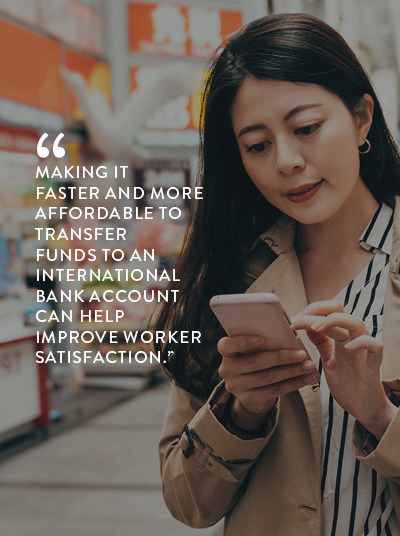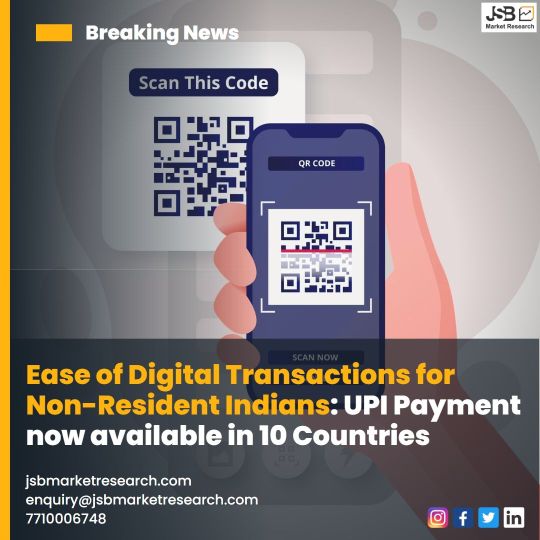#cross-border payments
Text
Insights Unveiled: Global Survey Explores How Blockchain is Reshaping Payment Systems Worldwide
The collaborative survey by Ripple and the US Faster Payments Council (FPC) has unveiled crucial insights into the evolving dynamics of the payment industry, specifically highlighting the transformative role of blockchain technology. In its second annual edition in 2023, the survey gathers perspectives from over a hundred industry leaders, shedding light on the adoption and implications of blockchain in payment systems.
A key revelation from the survey is the overwhelming consensus among payment leaders on the substantial benefits of blockchain technology. A staggering 77% of respondents acknowledge the positive impact of blockchain on payments, emphasizing its role in cost savings, enhanced security, quicker settlement times, and improved transparency. Importantly, these advantages are not limited to specific transaction types but extend across various payment formats, including domestic and cross-border transactions such as peer-to-peer (P2P), consumer-to-business (C2B), and business-to-business (B2B) transactions.
The survey underscores a notable emphasis on B2B transactions, aligning with the industry's broader trend of leveraging technology for efficiency and innovation in business transactions. Beyond B2B, the interest in applying blockchain to other payment areas like P2P and account-to-account (A2A) transactions signifies the technology's growing recognition for its versatility and adaptability.
While the survey reflects a positive sentiment towards blockchain and cryptocurrency in payments, it doesn't overlook existing challenges. Regulatory uncertainties, price volatility, and a lack of widespread adoption are recognized as significant barriers. However, a noteworthy shift is observed as more organizations accept cryptocurrencies for payments, indicating a gradual overcoming of aversion and risk concerns associated with digital currencies.
Sustainability and efficiency take center stage as crucial considerations in the adoption of blockchain technology. The survey reveals that over 81% of respondents express concerns about the environmental impact of blockchain's energy consumption. This places a spotlight on the industry's responsibility to address environmental considerations in the ongoing development and adoption of blockchain technologies.
Yet, the survey also reveals a persistent lack of awareness among respondents. Only 53% were familiar with the difference between Proof-of-Stake and Proof-of-Work, emphasizing the need for increased education and awareness initiatives to promote a broader understanding of blockchain technology.
In summary, the survey paints a dynamic picture of the payment industry, where blockchain emerges as a transformative force. As payment leaders grapple with challenges and seize opportunities, blockchain's role is set to grow, fostering innovation, efficiency, and transparency in the ever-evolving landscape of global payments.
0 notes
Text
Bitcoin, Next Stop 69k: Will The Entire Crypto Market Rise With It? | Bitcoin, Ethereum, Cardano, Uniswap, XRP, Helium, Arweave, Filecoin, Polkadot, Stellar Lumens
New Post has been published on https://www.ultragamerz.com/bitcoin-next-stop-69k-will-the-entire-crypto-market-rise-with-it-bitcoin-ethereum-cardano-uniswap-xrp-helium-arweave-filecoin-polkadot-stellar-lumens/
Bitcoin, Next Stop 69k: Will The Entire Crypto Market Rise With It? | Bitcoin, Ethereum, Cardano, Uniswap, XRP, Helium, Arweave, Filecoin, Polkadot, Stellar Lumens
Bitcoin, Next Stop 69k: Will The Entire Crypto Market Rise With It?
Bitcoin, Ethereum, Cardano, Uniswap, XRP, Helium, Arweave, Filecoin, Polkadot, Stellar Lumens
The recent surge of Bitcoin past the $50,000 mark has sent shockwaves through the crypto community, igniting hopes of a broader market recovery. While Bitcoin often sets the tone for the rest of the cryptocurrency space, is its ascent enough to guarantee a sunny outlook for other digital assets? Let’s explore the implications and delve into some promising contenders poised to benefit from this potential upswing.
Bitcoin’s Bullish Breakout: A Rising Tide Lifting All Boats?
Historically, Bitcoin’s price movements have had a significant influence on the broader crypto market. Its recent rally could signal renewed investor confidence and increased risk appetite, potentially leading to positive spillover effects for other cryptocurrencies. This optimism stems from several factors:
Increased mainstream adoption: Growing institutional interest and regulatory frameworks are paving the way for wider acceptance of Bitcoin, potentially driving further price appreciation.
Limited supply: Bitcoin’s capped supply of 21 million coins creates scarcity, making it a potential hedge against inflation and attracting investors seeking long-term value.
Technological advancements: Ongoing developments in the Lightning Network and other scaling solutions aim to address transaction speed and scalability concerns, enhancing Bitcoin’s utility.
Hot on Bitcoin’s Heels: Promising Crypto Assets to Watch
While Bitcoin may be the bellwether, several other projects hold immense potential:
Ethereum (ETH): The leading smart contract platform, facilitating decentralized applications (dApps) across various industries like finance, gaming, and NFTs. ETH 2.0, its upcoming upgrade, promises improved scalability and sustainability.
Cardano (ADA): Focused on security and scalability through a proof-of-stake consensus mechanism, Cardano aims to become a global financial system for everyone. Its rigorous peer-reviewed development process adds to its appeal.
Uniswap (UNI): A pioneering decentralized exchange (DEX) enabling peer-to-peer cryptocurrency trading without intermediaries. UNI governance tokens allow users to participate in platform decisions.
XRP (XRP): Designed for facilitating fast and cost-effective cross-border payments, XRP is popular among financial institutions. Its ongoing legal battle with the SEC adds an element of uncertainty.
Helium (HNT): Powering the decentralized Helium Network for internet-of-things (IoT) devices, HNT rewards individuals for hosting hotspots, creating a unique incentive model.
Arweave (AR): A decentralized storage solution offering permanent and verifiable data storage, Arweave caters to long-term data preservation needs.
Filecoin (FIL): Another decentralized storage project, Filecoin incentivizes network participants to store data securely and efficiently.
Polkadot (DOT): Aiming to connect different blockchains, Polkadot facilitates interoperability between diverse ecosystems, potentially unlocking the full potential of blockchain technology.
Stellar Lumens (XLM): Similar to XRP, XLM focuses on fast and low-cost cross-border payments, targeting remittance corridors and financial inclusion.
Remember: While Bitcoin’s momentum is encouraging, the crypto market remains volatile. Thorough research and understanding of individual projects’ fundamentals are crucial before making any investment decisions. Past performance is not indicative of future results.
This list highlights just a few of the many exciting projects in the crypto space. With Bitcoin breaking barriers, the coming months could see a revitalized market, but always approach every investment with caution and do your own research.
Keywords:
Bitcoin, Ethereum, Cardano, Uniswap, XRP, Helium, Arweave, Filecoin, Polkadot, Stellar Lumens, cryptocurrency, crypto market, Bitcoin price, crypto recovery, altcoins, blockchain, DeFi, smart contracts, dApps, decentralized finance, internet of things, data storage, cross-border payments, investment, technology, future of finance, space, moon, fantasy, nebula, rocket, spaceship, mascot, emblem, celestial body, pixel art, anime, constellation, panorama.
#Altcoins#Anime#Arweave#bitcoin#bitcoin price#blockchain#cardano#celestial body#constellation#cross-border payments#crypto market#crypto recovery#Cryptocurrency#dApps#data storage#decentralized finance#DeFi#emblem#ethereum#Fantasy#Filecoin#future of finance#Helium#internet of things#investment#mascot#moon#nebula#panorama.#pixel art
0 notes
Text
In today's interconnected global economy, small businesses are increasingly engaging in cross-border trade. However, along with the opportunities come challenges, particularly in managing cross-border payments efficiently. From fluctuating exchange rates to complex regulatory requirements, navigating the world of international payments can be daunting. But fear not! In this comprehensive guide, we'll delve into the common challenges faced by small businesses in cross-border payments and explore practical solutions to overcome them.
0 notes
Text
Cross-Border Payment Innovations
Over the years, cross-border payments have
grown fast. This was due to trends like cross-border B2C payments, borderless
e-commerce, web-centered businesses, and improvements in global trade. With
such demand, global companies seek solutions that make payments more
transparent, secure, and instant. These are all done in a bid to remain
competitive. This has resulted in payment providers turning…

View On WordPress
0 notes
Text
Four Nations Embrace Ripple's Innovative CBDC Platform: A Closer Look
Ripple, a prominent player in blockchain-based payment technology, recently unveiled its enhanced Ripple CBDC Platform, a comprehensive solution designed to support central banks, governments, and financial institutions in issuing their own central bank digital currencies (CBDCs). This avant-garde platform taps into the transformative potential of blockchain technology, the backbone of the XRP…

View On WordPress
#Blockchain Technology#Central Bank Digital Currencies#Cross-border Payments#Digital Currency#Global Adoption#Ripple CBDC Platform#XRP Ledger
0 notes
Text
Navigating Cross-Border Payments through Blockchain: how do they work?
Navigating Cross-Border Payments through Blockchain: how do they work?
In today’s world, making payments across borders has often been complicated and costly. Fortunately, due to the emergence of blockchain technology, people can now better navigate international transactions with this secure and efficient solution.
What Are Cross-Border Payments?
Blockchain-based cross-border payments involve…

View On WordPress
0 notes
Text
Cross-Border Payments Help Businesses Compete In Our Connected World
Today, fintechs such as Onbe are deploying technologies that make it simpler and more cost-effective for domestic companies to pay their international recipients.

From embracing fully remote workers based anywhere in the world to trading multi-day flights for the convenience of meeting clients on Zoom, the way we conduct international business has transformed over the past couple of years. Yes, the pandemic and current geopolitical climate are responsible for many of these changes, but so is the advancement of digital technology that helps businesses stay connected to their workers and customers anywhere in the world. Whether you’re paying cruise ship employees that travel across borders every day or creative workers taking advantage of the work-from-anywhere capabilities our digital economy allows, businesses today need fast, convenient, and secure ways to pay their workforces.
Global payment capabilities are also important to other types of nontraditional workers. In Onbe’s 2023 Future of Payments study, we found that 100% of gig workers in the U.S. say the option to exchange funds to a foreign currency is valuable to them. Given these preferences for digital payment technologies, there are inevitably greater demands on businesses to deliver modern payment experiences, anywhere in the world, that are fast, secure, and convenient – whether they are paying guest workers, gig workers, influencers, or even consumers in emerging markets.
The opportunity for fintechs like Onbe is to leverage innovative product development while working within regulatory frameworks to make it possible for organizations to meet these changing expectations. Digital infrastructure and automated processes that adhere to anti-money laundering and other regulations enable fast, secure and convenient cross-border payments and disbursements. These developments mean that payments are one less piece of the puzzle businesses need to figure out when serving their clients around the world; it’s now much simpler to meet consumers and workforces wherever they are.
Original Source Link: https://www.onbe.com/post/cross-border-payments-help-businesses-compete-in-our-connected-world
#Cross-Border Payments#payments solutions#payment gateways#payment disbursement#fintech#payments#payment
1 note
·
View note
Text
NPCI to Permit NRIs with International Numbers from 10 Countries to Use UPI Payments

NPCI (National Payments Corporation of India) will allow Non-resident Indians (NRIs) from 10 countries to transfer funds easily through UPI (Unified Payments Interface) from an international mobile number. The countries that fall into consideration are the United Kingdom, United States, Australia, Canada, UAE, Singapore, Qatar, Hong Kong, Saudi Arabia, and Oman. But to use this facility, people have to use Non-Resident Ordinary (NRO) or Non-Resident (External) Rupee (NRE) account. However, without an Indian mobile number, they can enjoy making digital payments.
An NRO account allows NRIs to manage the earned income in India while an NRE account permits the NRIs to transfer to India their foreign earnings. The Payments Corporation has announced 30 April as the deadline for the partner banks to comply with the instructions. The UPI move will not just assist local businesses abroad, but even the family, individuals, and international students.
Earlier the NRIs were unable to operate the UPI network because the same is dependable on SIM. The feature was to date accessible to only Indian SIM card phones. However, non-resident Indians can now utilize international SIM linked to their NRO or NRE accounts and make transactions online from their mobile UPI interface. Also, no charges will apply for such transactions. In December 2022 alone, UPI transactions saw a record high of Rs. 12.82 lakh crore. With the current step, the transactional amount will soar higher.
So, the NPCI will enable UPI transactions from mobile numbers bearing the country codes of the mentioned 10 nations along with the existing domestic country code. In the future, the facility can extend to other countries as well. UPI helps to instantly transfer money through mobile phones in easy steps. The partner banks have to make sure that the NRE and NRO accounts comply with the guidelines of the RBI (Reserve Bank of India) and FEMA (Foreign Exchange Management Act).
The beneficiary and remitter banks will keep in check all the transactions to combat money laundering and any act of terrorism so that the UPI system remains transparent and risk-free. NPCI has been receiving several requests from NRIs and customers to include a facility for some time now, and finally, international numbers from the 10 countries will be able to benefit from the instant and seamless payment on UPI.
Visit: - https://www.jsbmarketresearch.com/news/news-npci-nri-upi-payment
Follow our social handles:-
Instagram: - https://www.instagram.com/p/CnT9GV1o6gV/
Twitter: - https://twitter.com/JSBMarket/status/1613485999639924736?s=20&t=dnIEdrzbB7aUrWnhNzbrgA
LinkedIn: - https://www.linkedin.com/posts/jsbmarketresearch_nrisupi-upipayments-upiinternational-activity-7019251859638923264-y0CX?utm_source=share&utm_medium=member_desktop
YouTube: - https://youtube.com/shorts/K9dyiSHxeLQ?feature=share
Pint: https://pin.it/6hZ60IY
#NRI UPI Payments#Banking#Transaction#Global 10 Countries#NRI#Non-resident Indian#International Transactions#10 Countries#Financial Inclusion#Digital Payments#Cross-border Payments#swotanalysis#jsbmarketresearch#marketresearchreports
0 notes
Text
Re-imagining Money In The Age Of Crypto And Central Bank Digital Currency.

Investors are doubting themselves and feeling numb from losses after the latest crash in crypto assets.
But it's clear that digital currency is the way of the future. What kind of appearance will it have?
Some of the top experts in the world attempt to address this complicated and politically fraught matter in our most recent issue of Finance & Development.
Of course, digital currency has been evolving for a while. With the help of new technology, access to financial services and goods should become more democratic. The achievement of significantly more affordable, immediate local and international payments is a key objective.
The benefits could be particularly significant for those living in poor nations.
Eswar Prasad of Cornell University takes us on a tour of both established and new types of digital money while examining the ramifications for economics, monetary policy, global capital flows, and even societal structure.
Not all digital payment methods will succeed.
According to Singaporean Ravi Menon and others, Bitcoin, which has dropped by about 70% from its November high, and other crypto assets are ineffective as a form of payment.
Prices are separated from any underlying economic worth yet being frequently exchanged and subject to extensive speculation.
According to Menon, stablecoins are intended to reduce volatility, but many have shown to be everything but stable and rely on the calibre of the reserve assets that underpin them.
Nevertheless, according to writer Michael Casey, crypto and decentralised finance are not only here to stay but also have the potential to solve pressing issues like the global energy crisis.
Regulating is crucial.
The IMF's Aditya Narain and Marina Moretti explain that the regulatory fabric is being knitted and a pattern is anticipated to emerge.
However, they contend that the longer this process goes on, the more different regulatory frameworks will be locked in by national authorities.
They advocate for internationally coordinated regulation to stabilize markets, boost consumer trust, and create an environment that is safe for innovation.
Central banks are contemplating creating their own digital currency in the meantime.
Agustin Carstens, the head of the Bank for International Settlements, and his coauthors propose that central banks should take advantage of the technical advancements made possible by cryptocurrencies while also laying a vital foundation of confidence.
According to Josh Lipsky of the Atlantic Council, central bank digital currencies may be used to mitigate privacy and cybersecurity threats.
Our experts also examine the future of cross-border payments, the advantages and disadvantages of decentralised finance, and how India and African nations are pushing the boundaries of digital payments.
It's too soon to predict how the digital environment will change. But with the appropriate legislative and regulatory decisions, we can see a day when billions of people throughout the world have a mix of privately and publicly backed currencies stored securely in their digital wallets.
~ Jay Ponapan
#IMF#Crypto#Central Bank Digital Currency#Crypto Assets#Digital Money#Democratize Finance#Cross-border payments#Stablecoins#privacy#cybersecurity risks#digital wallets#digital payments
0 notes
Photo


A pair of Crossbows with an accompanying “goat’s-foot” lever, Spain, possibly Toledo or Valencia, ca. 1540-1560, housed at the Metropolitan Museum of Art.
#weapons#cross border payment#archery#europe#european#spain#spanish#toledo#valencia#renaissance#themet#metmusuem#art#history
247 notes
·
View notes
Text
maybe when im done moving i should try these little google rewards and whatever questionnaire apps for google play giftcards and hoard em in case they release some suit i rly need but that is paid
#not spending any of my main irl money on this anymore but if i earn it in gift cards straight away thats ok.#cards i can earn r not infinite and also not redeemable for non google play things.#not right now bc cross border move will screw w the payment processing whatever#love nikki#shining nikki
5 notes
·
View notes
Text
Digital Evolution: PhonePe’s Foray into Singapore’s Tourism Sector

The Singapore Tourism Board (STB) has announced a pioneering move to integrate India’s leading digital payments platform, PhonePe, into Singapore’s bustling market scene. Through a strategic two-year Memorandum of Understanding (MoU), this partnership aims to streamline the payment process for Indian tourists, enabling them to conduct transactions with ease at over 8,000 merchant points across Singapore. This collaboration leverages the robust Unified Payments Interface (UPI) system, a real-time payment system that facilitates inter-bank transactions, allowing for immediate cross-border financial exchanges straight from tourists’ bank accounts in India.
Read More:(https://theleadersglobe.com/money/digital-evolution-phonepes-foray-into-singapores-tourism-sector/)
#Singapore Tourism Board#Memorandum of Understanding#Unified Payments Interface#cross-border financial exchanges#Singapore#global leader magazine#the leaders globe magazine#leadership magazine#world's leader magazine#article#best publication in the world#news#magazine
0 notes
Text
What is LEI?To increase the precision and quality of financial data systems, parties to financial transactions globally can be uniquely identified by their 20-digit Legal Entity Identifier (LEI).For participants in the over-the-counter (OTC) derivative, non-derivative markets, major corporate..
#Lei certificate#Legal Entity Identifier (LEI)#get LEI number#apply lei number#cross border payment#global transaction#lei code number#lei number
0 notes
Text

Businesses are losing valuable time and money lining up multiple payments to international suppliers, freelancers or as payroll to overseas employees. That’s why we made mass payments possible. With SingX, you can add 1000 receivers and create 1000 overseas payments in just one click – with no hidden fees. It’s international payments made easy.
#fintech#remittance#money transfer overseas#international payment#international business payment#cross border payment solutions
0 notes